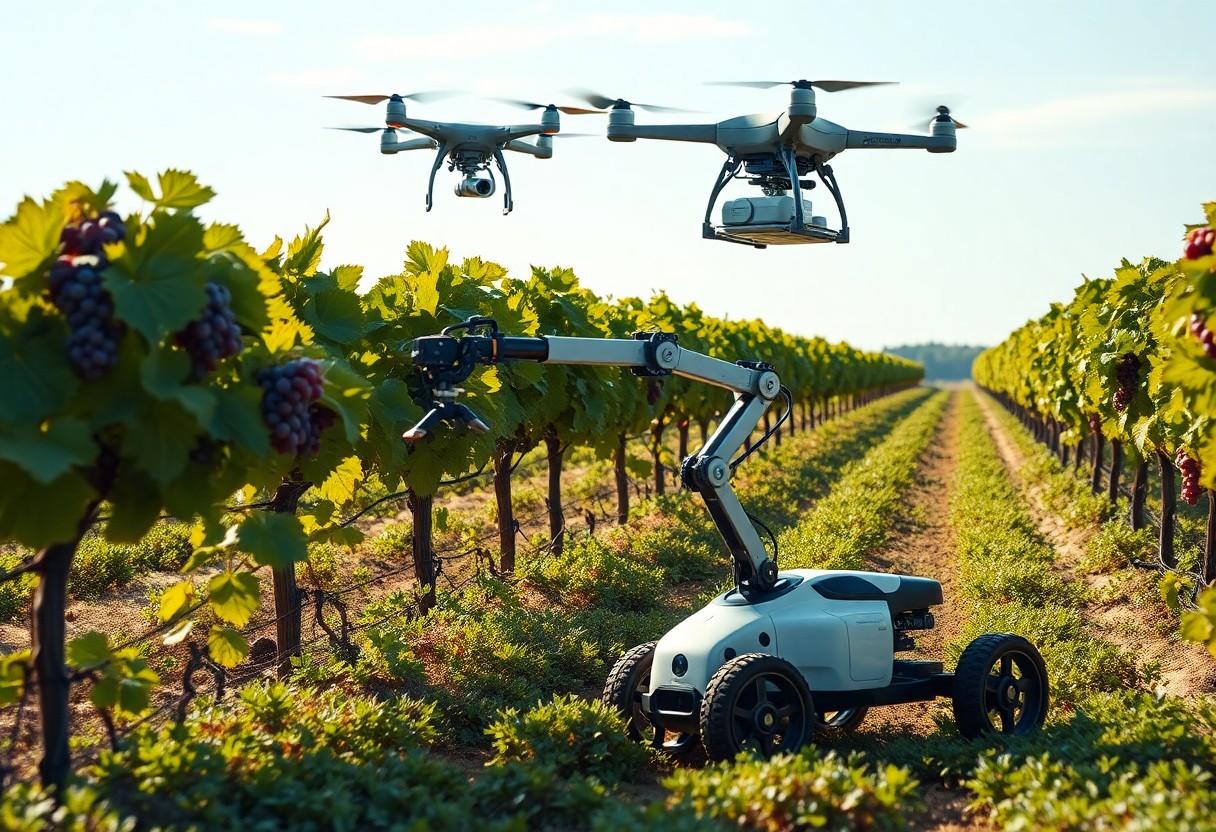It’s an exciting time in the field of medical robotics, as innovations in surgical robots and rehabilitation devices are transforming patient care. You can expect enhanced precision in surgeries with robotic assistance while experiencing significant improvements in rehabilitation outcomes. This post explores the latest advancements in these technologies, providing you with insights into how they impact healthcare and the potential benefits for both patients and practitioners.
The Technology Behind Surgical Robots
Surgical robots leverage cutting-edge technologies, enhancing precision and efficiency in various medical procedures. Advanced robotics integrates sophisticated algorithms and sensory data to aid surgeons during operations, facilitating minimally invasive techniques. With enhanced dexterity and control, these robots can execute complex tasks that would be challenging for human hands, resulting in reduced recovery times and improved patient outcomes.
Precision Engineering and Automation
The heart of surgical robotics lies in precision engineering and automation. Highly accurate robotic systems are designed with finely tuned actuators that mimic human movements, allowing for seamless operation within tight anatomical spaces. Automated features ensure consistent performance, reducing the likelihood of human error and increasing overall surgical reliability.
Innovations in Imaging and Visualization
Advanced imaging and visualization technologies enhance surgical robots’ capabilities, providing real-time feedback to surgeons. Enhanced 3D imaging and augmented reality overlays allow for a thorough understanding of complex anatomy, improving target accuracy during procedures. These innovations help you visualize intricate details and navigate challenging environments with greater confidence.
Innovative imaging techniques, such as fluorescence imaging and intraoperative ultrasound, provide vital information during surgeries, allowing for better visualization of tissues and structures. Technologies like robotic-assisted endoscopy integrate high-definition cameras and advanced imaging systems to deliver real-time, detailed views, enabling you to make informed decisions promptly. The combination of these systems with robotic platforms allows for greater situational awareness, facilitating more precise interventions, and ultimately leading to enhanced patient safety and outcomes.
Transforming Surgical Practices
Robotic technology is reshaping surgical practices, offering unprecedented precision and control. Surgeons utilize advanced robotic systems, such as the da Vinci Surgical System, to perform complex procedures with enhanced dexterity and visualization. With these innovations, you can expect improved safety and efficacy in operations, facilitating a paradigm shift in how surgeries are conducted across various specialties.
Minimally Invasive Techniques Revolutionized
The emergence of robotic-assisted minimally invasive techniques has significantly transformed surgical approaches. By utilizing smaller incisions, these techniques reduce tissue trauma, leading to less pain and faster recovery for you. Enhanced visualization enables surgeons to navigate complex anatomical structures with greater precision, minimizing complications and optimizing outcomes.
Surgical Outcomes and Patient Recovery Times
Integrating robotics into surgical procedures has led to notable improvements in surgical outcomes and reduced recovery times. Studies reveal that patients undergoing robotic-assisted surgeries often experience fewer complications and shorter hospital stays, enhancing overall satisfaction with the experience.
For instance, case studies show that robotic-assisted prostatectomies result in less blood loss and lower rates of postoperative complications compared to traditional methods. As a result, many patients report returning to their normal activities within days, rather than weeks. The benefits extend beyond individual procedures, impacting healthcare systems by reducing costs associated with extended hospital stays and complications. This transformative approach enables you to achieve better health outcomes with a quicker return to everyday life.

Rehabilitation Robotics: A New Frontier
You are witnessing a transformative era in rehabilitation robotics, where advanced technologies are redefining recovery processes. These innovations not only enhance mobility but also significantly improve the quality of therapeutic interventions. Whether through intelligent feedback systems or adaptive machines, the integration of robotics into rehabilitation is leading to faster, more effective recoveries and enriching patient experiences.
Adaptive Exoskeletons for Enhanced Mobility
Adaptive exoskeletons enable you to regain mobility and independence through personalized support and assistance. By using lightweight materials and intelligent algorithms, these devices adjust to your movements in real time, aiding in standing, walking, and other activities. For example, studies have demonstrated that users of exoskeletons showed a 30% improvement in walking speed compared to traditional rehabilitation methods.
Robots in Physiotherapy: Personalizing Recovery
Robots in physiotherapy offer tailored rehabilitation experiences that adapt to your unique needs. Through advanced sensors and data analytics, these robotic systems can assess your progress and modify therapy exercises accordingly, ensuring optimal recovery based on your individual performance and pain levels.
Take, for instance, the use of robotic-assisted devices like the AlterG anti-gravity treadmill, which allows you to run or walk with reduced weight-bearing forces. This technology personalizes rehabilitation by adjusting the amount of body weight from which you are supported, facilitating a gradual increase in activity without the risk of injury. Furthermore, robotic systems are capable of analyzing your movements, providing instant feedback that allows therapists to fine-tune interventions, thereby improving outcomes and enhancing your overall rehabilitation journey.
Ethical Considerations and Patient Acceptance
Understanding ethical considerations in medical robotics is vital as you navigate the intricacies of advanced surgical techniques. The integration of robotic systems must prioritize patient safety and informed consent. Resources detailing recent advances in robot-assisted surgical systems highlight the ethical landscape, emphasizing transparency and the importance of engaging patients in decision-making processes.
Balancing Risks and Rewards in Robotic Surgery
Each robotic procedure entails a careful evaluation of potential risks and rewards. While robotic surgery can minimize invasive trauma and enhance precision, concerns such as mechanical failure and the surgeon’s proficiency with the technology cannot be overlooked. Establishing protocols that prioritize both patient comfort and successful outcomes is vital to achieving the best possible surgical results.
Patient Perspectives: Trust and Acceptance of Robotics
Your trust in robotic assistance during surgery significantly hinges on the perceived reliability and efficacy of the technology. Familiarity with robots in everyday life may bolster acceptance, yet skepticism exists, especially regarding machine errors. Efforts to demystify robotic surgery through patient education can enhance confidence, often leading to more positive attitudes toward robotic interventions.
Trust is paramount in the patient-robot interaction, as your comfort level can directly influence surgical outcomes. Studies indicate that patients who feel well-informed about the robotic systems used in their procedures are more likely to embrace the technology. Engaging discussions between healthcare providers and patients about the advantages and limitations of robotic surgery can bridge gaps in understanding and foster a more supportive environment. Personal testimonies from those who’ve undergone robotic procedures often underscore the importance of human oversight, reinforcing that the technology is a tool rather than a replacement for skilled surgeons.
Future Prospects: Where Medical Robotics is Heading
Your journey into the future of medical robotics reveals a landscape rich with possibilities. Innovations like autonomous surgical systems and next-generation rehabilitation devices promise to elevate precision, reduce recovery times, and enhance patient outcomes. As medical robotics evolves, you can expect seamless integration with existing healthcare infrastructures, tailored solutions for diverse patient needs, and widespread adoption that could redefine standard medical practices.
Integration of AI and Machine Learning in Robotics
The integration of AI and machine learning into medical robotics is transforming surgical procedures and rehabilitation processes. AI algorithms enable robots to analyze complex data, provide actionable insights, and assist surgeons with enhanced precision. This synergy not only optimizes surgical outcomes but also personalizes rehabilitation regimens, adjusting them based on real-time patient feedback and progress.
Potential Impact on Healthcare Accessibility
As medical robotics advance, their potential to improve healthcare accessibility becomes increasingly significant. With the ability to deliver remote care and automate routine procedures, surgical robots and rehabilitation devices can reach underserved populations, ensuring that high-quality medical attention is not confined to urban centers. This democratization of healthcare could lead to better patient outcomes across diverse demographics.
Access to advanced medical robotics can significantly reduce geographical and financial barriers to healthcare. For instance, automated systems can facilitate remote surgeries, allowing specialists to operate on patients in rural areas. Rehabilitation robots can provide continuous support at home, minimizing the need for frequent hospital visits. As a result, patients facing logistical challenges can receive timely and effective treatment. Breakthroughs in affordability will further enhance accessibility, enabling more facilities to adopt robotic technologies, thus impacting a larger patient base.
Final Words
With these considerations, you can appreciate the significant impact of medical robotics on surgical procedures and rehabilitation. Advances in surgical robots enhance precision and reduce recovery times, transforming patient outcomes. Similarly, rehabilitation devices empower you to optimize your recovery process and regain mobility more effectively. As these technologies continue to evolve, your access to innovative solutions will further improve, ultimately setting new standards in healthcare for you and others.







